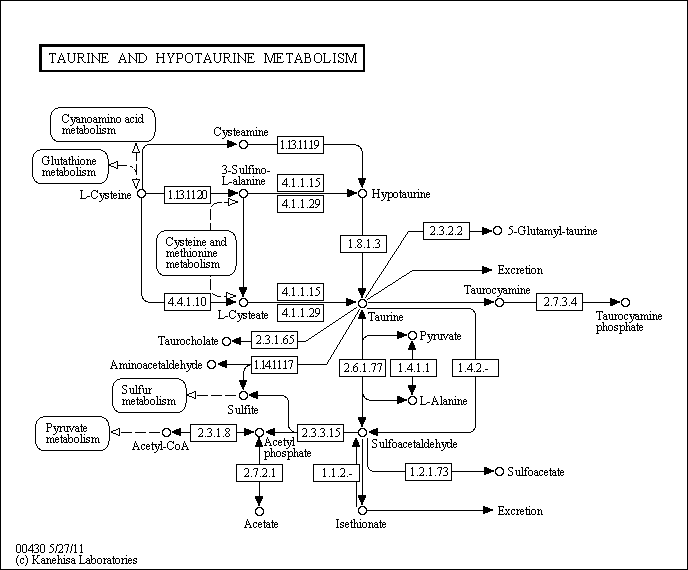Taurine and Hypotaurine Metabolism
Description: Taurine, or 2-aminoethanesulfonic acid, is an organic acid. It is also a major constituent of bile and can be found in the lower intestine and in small amounts in the tissues of many animals, including humans. Taurine is a derivative of the sulfur-containing (sulfhydryl) amino acid, cysteine. For mammalian taurine synthesis occurs in the pancreas via the cysteine sulfinic acid pathway. In this pathway, the sulfhydryl group of cysteine is first oxidized to cysteine sulfinic acid by the enzyme cysteine dioxygenase. Cysteine sulfinic acid, in turn, is decarboxylated by sulfinoalanine decarboxylase to form hypotaurine. Taurine is conjugated via its amino terminal group with chenodeoxycholic acid and cholic acid to form the bile salts sodium taurochenodeoxycholate and sodium taurocholate. This reaction is catalyzed by BAAT (bile acid-CoA: amino acid N-acetyltransferase). In the body, this reaction occurs in hepatocytes and is the means by which bile acids recovered from the intestine are converted to bile salts before being released again into the bile. The low pKa (1.5) of taurine\u2019s sulfonic acid group ensures that this moiety is negatively charged in the pH ranges normally found in the intestinal tract. Source: Pathman

Related BMRB Molecules
- Acetic Acid
- Acetyl Phosphate
- L-Alanine
- Cysteamine
- L-Cysteic Acid
- L-Cysteine
- L-Glutamic Acid
- Hypotaurine
- Isethionic Acid
- Pyruvic Acid
- Sulfoacetic Acid
- Taurine
- Taurocholic Acid
For complete information about pathway, see KEGG [map00430]
